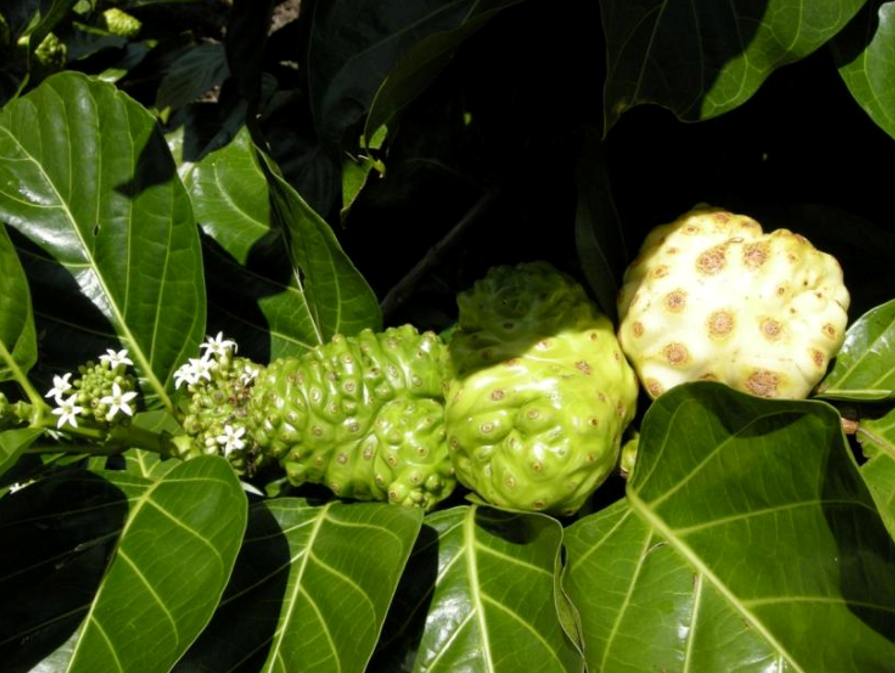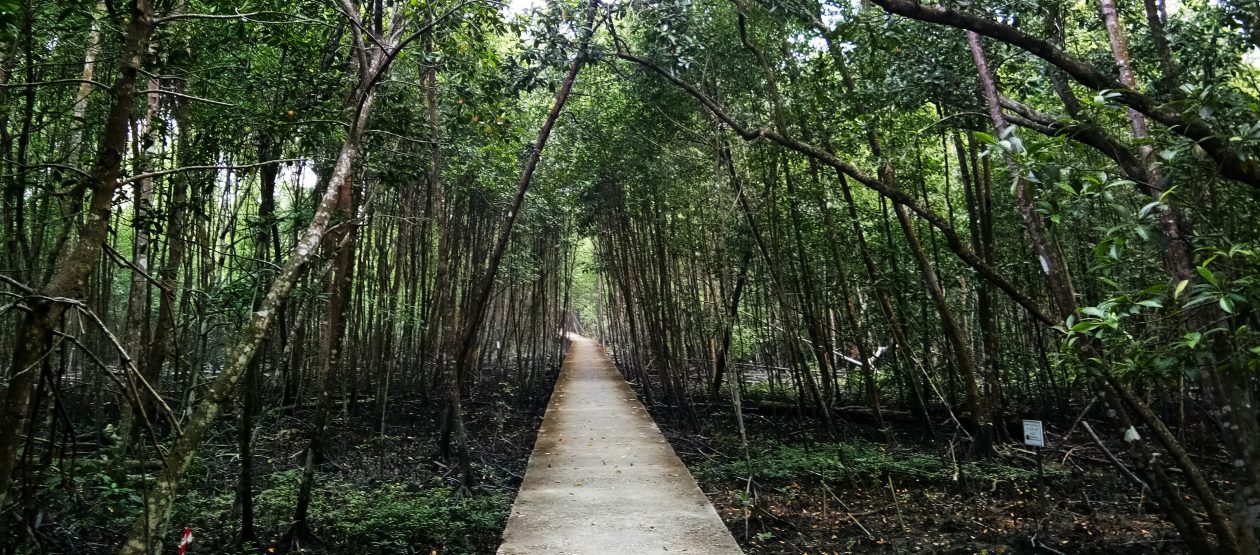CLICK BELOW FOR AUDIO GUIDE
Morinda citrifolia, commonly known as noni, is a small evergreen tree or shrub, 3-10m in height at maturity. Noni has an extremely wide range of environmental tolerances. It can grow in infertile, acidic and alkaline soils and is at home in very dry to very wet areas. It grows wild in coastal areas. Leaves are large, simple and broadly elliptical. The flowers have white petals. The fruit is yellowish-white, fleshy, 5-10cm long and about 3-4cm in diameter when ripe. Noni has an extensive lateral root system and a deep taproot.

Noni is cultivated for its medicinal properties. It is used in both traditional and contemporary medicine to treat diseases such as malaria, jaundice, hypertension, arthritis, asthma and even cancer. The bark contains a red pigment and the roots contain a yellow pigment, both used in making dyes. The plants within the genus provide much of the dyes for the batik industry especially red, purple, brown and pink colours. The fruits are edible but tend to be rancid. The wood can be used in light construction, canoe parts and axes. The trunk can be used as firewood. Very young leaves can be cooked and eaten as vegetables.
